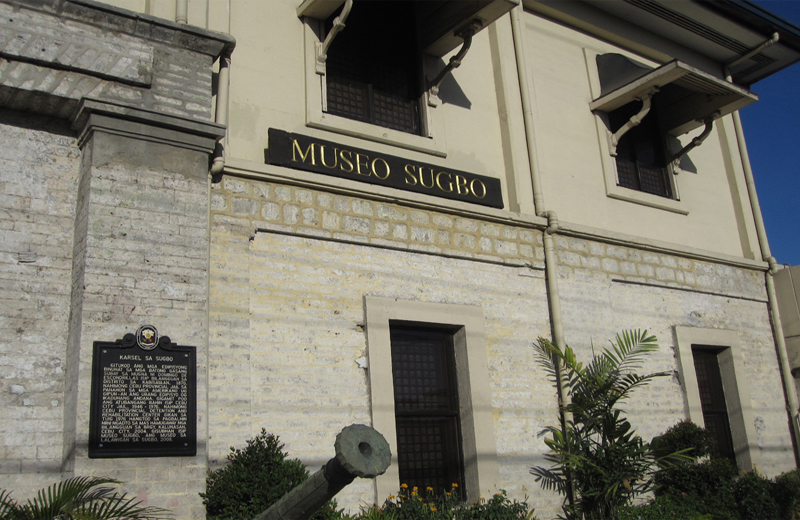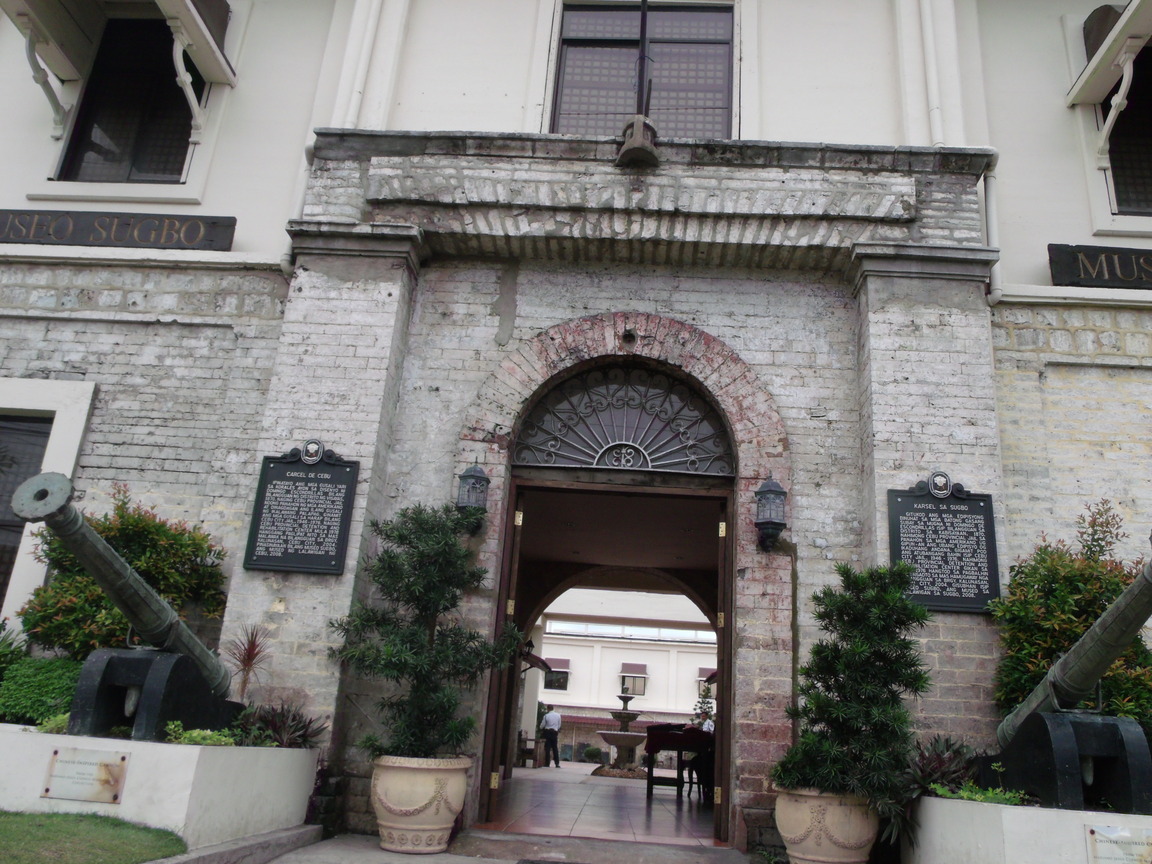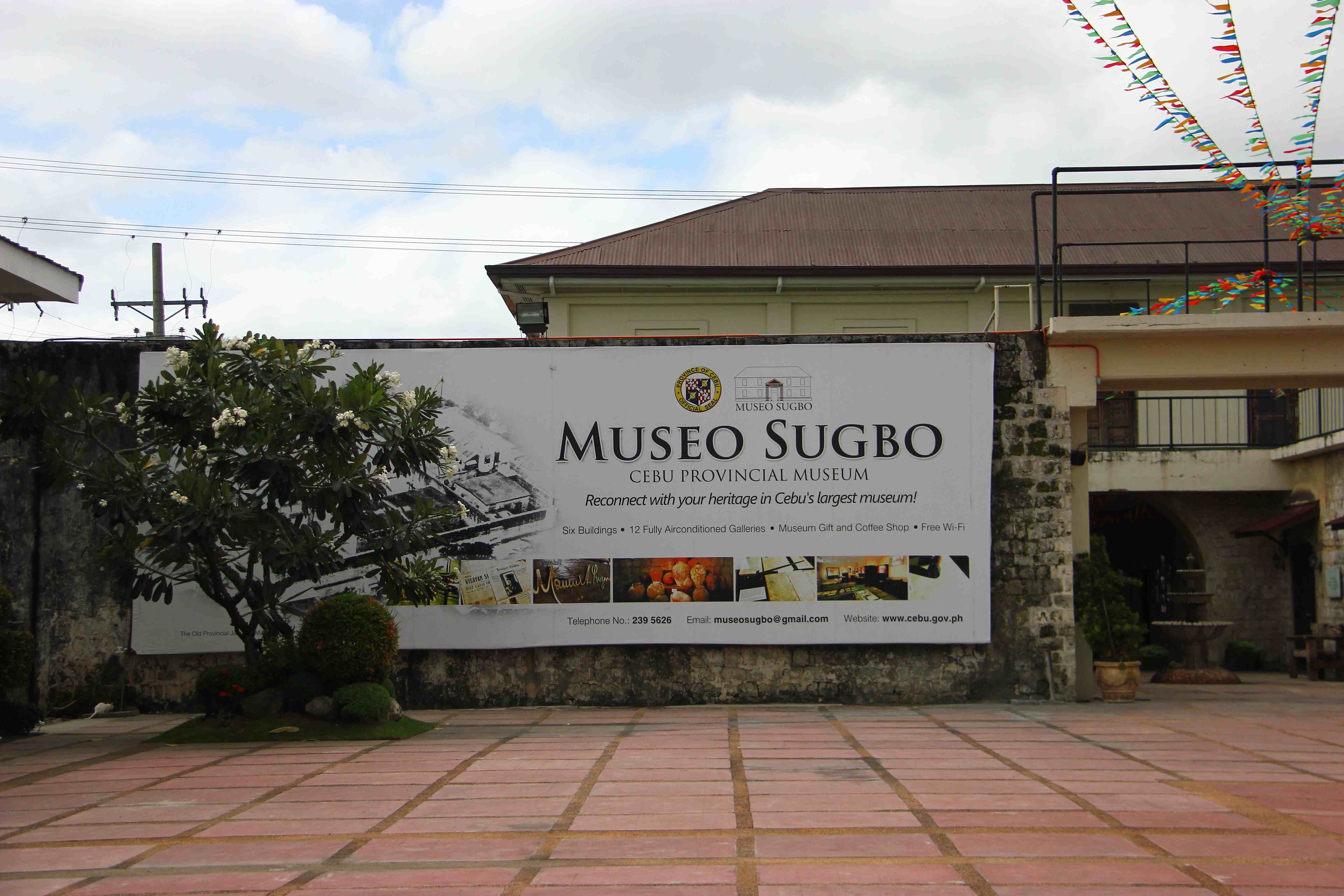Museo Sugbo

Museo Sugbo is the Cebu Provincial Museum found in the previous Cebu Provincial Detention and Rehabilitation Center (CPDRC). It is around four blocks north of Plaza Independencia.
 Museo Sugbo is housed at what was once called C?rcel de Ceb?, the provincial prison of Cebu.
Museo Sugbo is housed at what was once called C?rcel de Ceb?, the provincial prison of Cebu.
Planned and designed in 1869 by Domingo de Escondrillas, the only architect in Cebu around that time, the C?rcel de Ceb? was initially proposed as the Carcel del Distrito, the main jail for the Visayas District. This accounts for its generally large size around the time it was constructed. After a flurry of supports and independent survey in Manila, the undertaking was sanction and development presumably started around 1871. It is believed that the greater part of the coral stone were from the Parian Church?which was obliterated in 1878 after the Bishop of Cebu won a long-drawn court case against its parishioners in the 1850s?were utilized to create parts of the C?rcel. Twenty years later of utilization, a remodel was requested in 1892, which included more structures behind the fundamental structure that now serves as the first six displays of the museum.
Records are not clear regarding as to when the second story of the primary building was added. But the building design suggests this to be during the American colonial period.
 The C?rcel de Ceb? housed not just criminals in its 135-year history. Throughout the Revolution, large portions of the Katipuneros were detained here without trial and a significant number of them were in the end executed in nearby Carreta Cemetery. During the early years of the American period, the Carcel served as a stable for horses contending in the Hip?dromo close-by.But it was eventually used once again as a prison, both for the city and the province. Throughout the Japanese Occupation, guerrillas were detained here after enduring persisting torture under the hands of the Kempei-Tei, the Japanese secret police. After the war, a considerable lot of collaborators in Cebu were likewise detained here. From the 1950s to 1976, the front segment of the C?rcel served as the city jail, while the three structures behind were utilized as the provincial jail.
The C?rcel de Ceb? housed not just criminals in its 135-year history. Throughout the Revolution, large portions of the Katipuneros were detained here without trial and a significant number of them were in the end executed in nearby Carreta Cemetery. During the early years of the American period, the Carcel served as a stable for horses contending in the Hip?dromo close-by.But it was eventually used once again as a prison, both for the city and the province. Throughout the Japanese Occupation, guerrillas were detained here after enduring persisting torture under the hands of the Kempei-Tei, the Japanese secret police. After the war, a considerable lot of collaborators in Cebu were likewise detained here. From the 1950s to 1976, the front segment of the C?rcel served as the city jail, while the three structures behind were utilized as the provincial jail.
The C?rcel changed names twice, first throughout the American to the post-War periods when it was known as the Cebu Provincial Jail. In the 1980s, the name was changed to Cebu Provincial Detention and Rehabilitation Center (CPDRC).
The historical center, which highlights Cebu’s political history, is acknowledged as a replica of the National Historical Institute’s Museum of Philippine Political History. It was pronounced open to general public in 2008, throughout the 439th founding anniversary celebration of the province of Cebu.
Getting There: The place is part of the downtown area, M.J Cuenco Avenue, which can easily be accessed using Jeepneys. Depending on where you are starting from around the Cebu, take a jeepney going to Colon St. Once you are in colon, take a jeepney that’s gonna be passing through M.J Cuenco Avenue. Majority of these Jeepneys are the ones going to Mabolo. You can always take a taxi if you are not familiar with the place. Renting a car is also a great alternative. Car rental companies offer tours around Cebu downtown area. When you have your own car, other than this museum, you can also tour other popular sites in Cebu downtown. Such as Cebu Heritage Park, Casa Gorordo, Sandiego-Yap Ancestral House, Fort San Pedro and many more.
